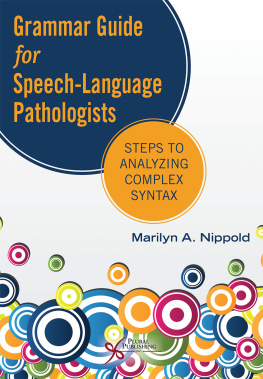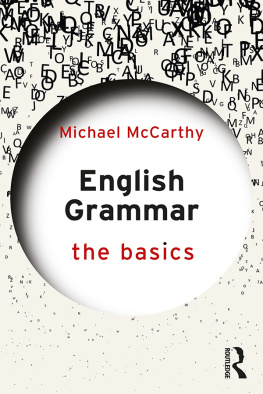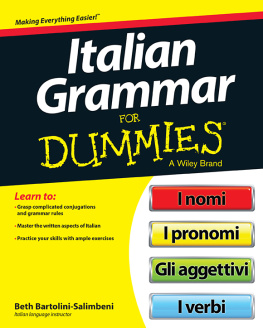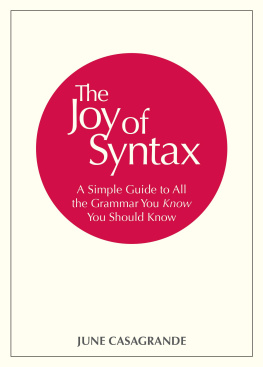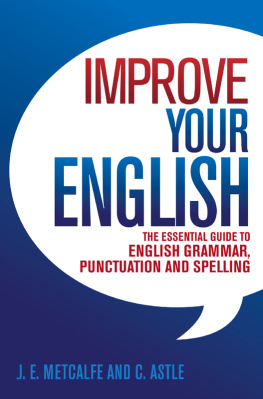


9177 Aero Drive, Suite B
San Diego, CA 92123
e-mail:
Website: https://www.pluralpublishing.com
Copyright 2023 by Plural Publishing, Inc.
Typeset in 11/14 Stone Serif by Flanagans Publishing Services, Inc.
Printed in the United States of America by Integrated Books International
All rights, including that of translation, reserved. No part of this publication may be reproduced, stored in a retrieval system, or transmitted in any form or by any means, electronic, mechanical, recording, or otherwise, including photocopying, recording, taping, Web distribution, or information storage and retrieval systems without the prior written consent of the publisher.
For permission to use material from this text, contact us by
Telephone: (866) 758-7251
Fax: (888) 758-7255
e-mail:
Every attempt has been made to contact the copyright holders for material originally printed in another source. If any have been inadvertently overlooked, the publisher will gladly make the necessary arrangements at the first opportunity.
Library of Congress Cataloging-in-Publication Data:
Names: Nippold, Marilyn A., 1951- author.
Title: Grammar guide for speech-language pathologists : steps to analyzing complex syntax / Marilyn A. Nippold.
Description: San Diego, CA : Plural Publishing, Inc., [2023] | Includes bibliographical references and index.
Identifiers: LCCN 2022050674 (print) | LCCN 2022050675 (ebook) | ISBN 9781635503937 (paperback) | ISBN 1635503930 (paperback) | ISBN 9781635503944 (ebook)
Subjects: MESH: Speech-Language Pathology--methods | Linguistics--methods Language Development Disorders
Classification: LCC RC425 (print) | LCC RC425 (ebook) | NLM WL 340.2 DDC 616.85/50014--dc23/eng/20230119
LC record available at https://lccn.loc.gov/2022050674
LC ebook record available at https://lccn.loc.gov/2022050675
Marilyn A. Nippold, PhD, CCC-SLP
Professor
Communication Disorders and Sciences Program
University of Oregon
Eugene, Oregon
Valencia C. Perry, PhD, CCC-SLP
Assistant Professor
Department of Communication Sciences and Disorders
Howard University
Washington, DC
This book is dedicated to the thousands of university students I have taught over the past 40 years. Writing it has been a protracted process with many starts, stops, and detours. It has also been a labor of love. Yes, I recognize how challenging it can be to attain a level of competence in understanding grammar. At the same time, I also appreciate how rewarding it can be to grasp certain concepts that at one time seemed too difficult, confusing, or frustrating. Thus, I hope the book will be useful to future students and to speech-language pathologists who work with children, adolescents, and adults in schools and clinics in English-speaking countries.
Marilyn Nippold
Purpose
T his book is entitled Grammar Guide for Speech-Language Pathologists: Steps to Analyzing Complex Syntax . It was written primarily for students who are becoming speech-language pathologists (SLPs) and who plan to work with preschool children, school-age children, adolescents, or adults who have spoken and written language deficits. In particular, this includes clients who have developmental language disorder (DLD), a condition that is often overlooked or misdiagnosed (McGregor, 2020) but is nevertheless characterized by difficulty in acquiring syntax, morphology, and vocabulary. This book is appropriate also for SLPs who would like to review English grammar to prepare for assessment and intervention activities.
Throughout this book, we refer to Systematic Analysis of Language Transcripts (SALT; Miller et al., 2019), a software program that greatly facilitates the process of analyzing a clients spoken or written language sample. SALT is a user-friendly program that is relatively easy to learn, and once a sample has been transcribed and entered into the program, SALT automatically calculates many key variables, saving valuable time for busy SLPs. It also has normative data for conversational, narrative, expository, and persuasive discourse. Moreover, once an SLP knows how to identify different types of words, morphemes, phrases, and clauses, and understands how they function the focus of this book SALT can quantify those elements in the clients language sample, providing valuable information for identifying a language disorder, pinpointing deficits, planning intervention, and documenting growth.
Consider Rico, a 13-year-old boy who attends the sixth grade at a public middle school in Los Angeles. Rico is passionate about cooking and is quite skilled at making elaborate desserts such as chocolate souffls, French apple cake, and cheesecake brownies. His goal is to become a chef in a high-end restaurant in Los Angeles and eventually to open a cooking school and teach others. For these reasons, Rico is motivated to complete high school and wants to attend a community college where he can study culinary arts.
However, Ricos grades are poor and he has difficulty expressing himself, even when talking about topics he understands well. For example, his older sister reports that when Rico tried to explain to her how to make a good pie crust, he struggled to pull up the names of common cooking utensils (e.g., pastry cutter, serrated paring knife, spatula, whisk) and to pronounce their names correctly (e.g., oven thermometer, aluminum pan, parchment paper). In addition, during assigned group discussions at school, Ricos science teacher reports that he uses mostly short, simple sentences and that he often hesitates, revises his words, or simply gives up and stops talking.
As the SLP at Ricos middle school, you are faced with several critical questions: First, does Rico actually have a language disorder? If so, how do you know, and how will you document and measure the extent of his difficulties with verbal expression, including his challenges with syntactic and lexical development? Most importantly, how will you plan evidence-based treatment, implement intervention, and monitor his progress over time?
A common reaction to these questions is to begin by administering a norm-referenced standardized language test, such as the Clinical Evaluation of Language FundamentalsFifth Edition (CELF-5; Wiig et al., 2013) or the Test of Adolescent and Adult LanguageFourth Edition (TOAL-4; Hammill et al., 2007). Although tests such as the CELF-5 and the TOAL-4 can provide useful information, they do not tell us how the client actually uses language to communicate in the real world for real purposes, nor do they offer much guidance for planning intervention. On the other hand, a language sample appropriately elicited, transcribed, analyzed, and interpreted can provide this type of naturalistic information. It can also help identify specific deficits or weaknesses in language that need to be addressed.
In Ricos case, the SLP could begin by eliciting conversational and expository language samples. The conversational sample could be used to establish rapport with Rico and learn about his family, friends, pets, and school experiences. Then, the expository sample could provide an opportunity for Rico to talk about a more challenging topic, which potentially could elicit higher-level language skills by stimulating more complex thought (Nippold, 2021). For example, Rico could be asked to explain how to make a superb chocolate souffl from start to finish, a process that would involve talking about the ingredients, steps, procedures, and key strategies needed to ensure the finished product has excellent taste and texture. The two language samples could then be transcribed, entered into SALT, and analyzed to determine if Rico has a language disorder and, if he does, what aspects of language are impacted.
Next page
